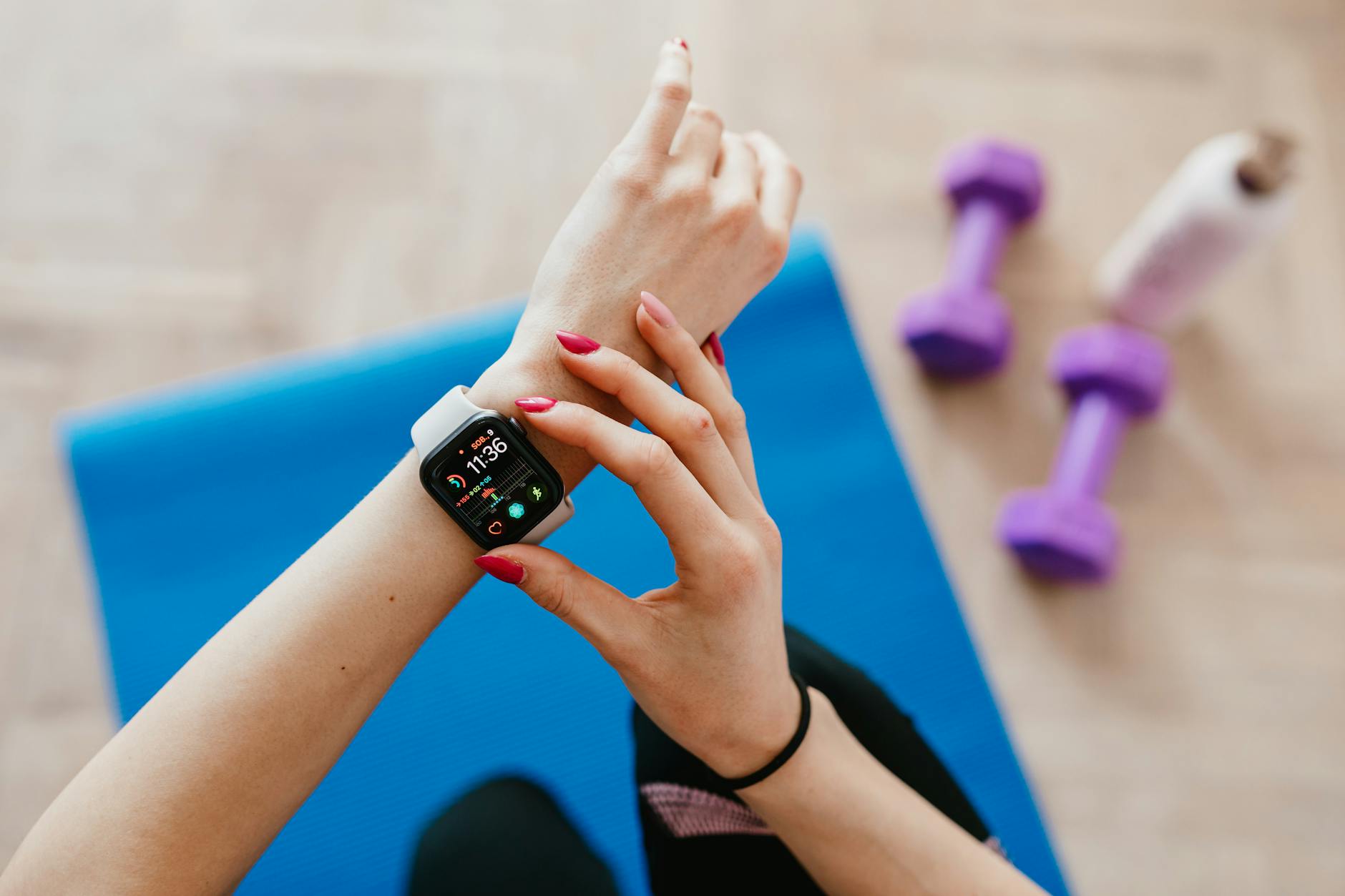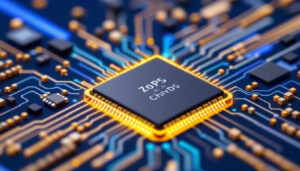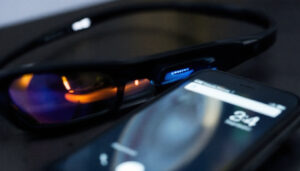Fitness trackers have moved far beyond simple step counters, shaped by user demands for greater detail and accuracy. Today’s models can monitor heart rate variability, track oxygen saturation, and provide sleep analytics, appealing to technology-driven professionals who expect more from their devices. Features like real-time health monitoring, advanced sensors, and integration with business tools allow users to extract actionable insights. For IT professionals, developers, and electronics experts, this shift means access to data that can inform both personal performance and workplace health strategies. Users now seek reliable metrics and sophisticated reporting, reflecting a broader transformation in health technology. “Next-Generation Fitness Trackers: Expanding Beyond Step Counting for Electronics Teams”
Beyond Steps: Advanced Health Metrics and Insights
Fitness trackers now offer actionable health insights that far surpass the capabilities of traditional pedometers. By monitoring advanced physiological parameters around the clock, these tools cater to the needs of IT professionals, developers, and business leaders who demand comprehensive health management and actionable information. Let’s examine the metrics that set next-generation wearables apart from basic step counting.
Continuous Heart Rate, ECG, and Blood Oxygen Monitoring
 Photo by Tima Miroshnichenko
Photo by Tima Miroshnichenko
Current fitness trackers provide continuous heart rate tracking, not just during exercise, but throughout the entire day. Devices using optical sensors record subtle fluctuations, painting a precise picture of cardiovascular health and workload. The inclusion of on-demand electrocardiogram (ECG) capabilities allows users to detect irregular heart rhythms, which is valuable for those working in high-stress technological settings.
Blood oxygen saturation (SpO2) monitoring now comes standard on most advanced trackers. SpO2 measurement helps users gauge respiratory efficiency—a critical feature for individuals with sedentary office routines or those exposed to fluctuating environments such as long flights, server rooms, or remote worksites.
These metrics are no longer just for athletes. For electronics professionals, identifying patterns in heart rate or oxygen levels can help mitigate the impact of extended screen time, variable work hours, and indoor air quality. For a deeper perspective on the evolution of top-tier fitness trackers, see The best fitness trackers and watches for 2025.
Advanced Sleep and Recovery Analytics
Sleep quality has a measurable impact on attention, productivity, and cognitive health. Trackers break down sleep into stages—light, deep, and REM—capturing interruptions or irregular patterns. Recovery scores factor in variables such as heart rate variability, recent activity, and sleep duration to provide a clearer understanding of readiness.
- Sleep architecture: Assess how much time is spent in various restful stages.
- Recovery metrics: Use health data to suggest optimal times for focus, exercise, or rest.
- Practical insights: Identify links between late-night device use and poor sleep quality, informing smarter habits for IT professionals.
The ability to analyze and act on these highly granular data points enables users to fine-tune their daily routines, promoting better resilience to workplace pressures and irregular hours. Sleep analytics offer targeted recommendations, aligning well with demanding work schedules and variable shift patterns.
Stress and Mental Wellness Tracking
Wearable devices now integrate stress and mood-tracking algorithms that synthesize data from heart rate variability and physical activity levels. By monitoring physiological signals, trackers recognize signs of acute or chronic stress—common in information technology and development roles where high cognitive loads are frequent.
Some devices offer guided breathing sessions or short mindfulness reminders, helping manage workplace anxiety quickly and discreetly. Metrics extend beyond physical health to include:
- Real-time tracking of autonomic nervous system balance
- Trend analysis for sustained stress periods
- Personalized recommendations appropriate for high-demand roles
Employers and workers can use aggregated insights for workplace wellness strategies, supporting long-term productivity and health. Insightful tracking encourages a proactive approach to mental wellness, helping professionals balance project workloads with personal health.
Real-Time Metabolic and Hydration Measurement
Recent innovations allow trackers to estimate caloric burn and even monitor hydration status. Algorithms combine sensor data with personal metrics (age, weight, movement patterns) to offer precise, individualized metabolic profiles. More advanced models can now detect sweating patterns or use skin sensors to prompt hydration reminders.
- Calorie tracking: Moves away from simple step-based estimates toward comprehensive daily expenditure calculations.
- Hydration monitoring: Reduces risk of distraction, fatigue, and headache from mild dehydration—especially relevant for those in air-conditioned offices or highly variable environments.
- Use in daily routines: Promotes timely hydration and nutrition adjustments, crucial for minimizing energy dips during extended work sessions.
These innovations make it possible to turn raw sensor data into relevant workplace strategies, maximizing focus and well-being. Integrating next-generation tracking with workplace wellness programs is already emerging as a key trend for the coming years. For more on related advances, visit the breakdown of technology tracking fitness trends for 2025.
Integrating the Wearable Technology Ecosystem : connectivity and the Rise of Next Generation Trackers
Wearable fitness trackers now operate in highly interconnected environments, allowing data to flow smoothly across devices, platforms, and cloud services. Integrations and connectivity underpin their value, enabling data-driven decisions, automation, and user engagement that span far beyond standalone devices. As IT professionals and electronics experts explore the broader fitness ecosystem, seamless connectivity becomes a central priority—linking hardware, software, and external systems into a functional whole.
Cloud and App Integrations for Fitness Data
 Photo by Kaboompics.com
Photo by Kaboompics.com
Current fitness trackers rely heavily on secure cloud infrastructures and synchronized apps for data transfer, analysis, and accessibility. This design allows users to review metrics in real time across multiple devices, including smartphones, tablets, and desktops. Integration with health platforms such as Google Fit, Apple Health, and Samsung Health makes it possible to consolidate data from various sources and provide a comprehensive health overview.
Key benefits of cloud and app integrations include:
- Automated synchronization: Data updates instantly across all user devices.
- Long-term data storage: Historical analytics and trend recognition become feasible.
- Advanced reporting: Dashboards and personalized recommendation engines deliver actionable insights.
Cloud integration also introduces new considerations around data privacy and security for personal health information. Fitness stakeholders must address these aspects with robust encryption standards, especially as devices become part of a larger, interlinked network. For more on the evolving structure of medical IoT and its data strategies, refer to this review of wearable devices in the medical Internet of Things.
IoT Connectivity: Smart Home and Office Applications
Wearable devices now connect to a diverse range of IoT-enabled environments. By communicating with smart home and office systems, fitness trackers add another dimension to personal and workplace automation.
Relevant use cases for IoT integration in wearables include:
- Smart lighting and temperature adjustments: Automatically set based on activity recognition or stress levels.
- Access control: Secure entry leveraging wearable authentication, reducing physical badge dependency.
- Office efficiency tools: Meeting reminders, break prompts, and productivity analytics connected directly to enterprise platforms.
These integrations improve user comfort, drive efficiency, and create holistic experiences that merge physical health with digital convenience. Organizations can also leverage aggregated data for workforce wellness initiatives, supporting healthier routines within office or remote settings.
For additional context on the next wave of IoT-connected wearables and examples across industry, see this detailed guide on IoT in wearable devices.
APIs and Opportunities for Custom Development
Robust APIs enable developers to extend wearable platforms, allowing tailored solutions that fit specific organizational or personal requirements. Through well-documented APIs, developers can build new applications that pull, analyze, and respond to fitness data.
Key opportunities include:
- Custom dashboards: IT teams can combine health metrics with productivity tools or workflow dashboards.
- Integrated alerts and automation: Trigger environmental changes (such as adjusting home thermostats or office lighting) when specific physiological markers are detected.
- Enhanced interoperability: Connect wearables with third-party services, from scheduling software to specialized medical records.
APIs also empower enterprise IT departments to enforce data controls and plug into authentication systems, further enhancing security. Consider reviewing the Basics of Circuit Boards and how they support connectivity in modern electronics, at Understanding Modern Electronics Connections, for related technical context on integration foundations.
Developers and organizations are increasingly focused on data interoperability—ensuring devices from different manufacturers, with their own unique standards, can work together efficiently. This trend shapes the next phase of wearable ecosystems: more adaptable, customizable, and value-driven integrations that meet user needs in the workplace and at home.
Security and Privacy in Next-Gen Fitness Trackers
With fitness trackers becoming more advanced, concerns about the security and privacy of health and biometric data have come to the forefront. Information collected from wearable devices—such as heart rate, sleep patterns, and even fingerprints—represents sensitive personal data. IT professionals, developers, and business leaders recognize the need for robust data protection strategies, especially as these devices integrate deeper into workplace and enterprise systems. Security features in modern fitness trackers are evolving rapidly to address new risks while providing users and organizations with control and confidence.
Data Encryption and Privacy Controls
Modern fitness trackers use high-level encryption to protect user data at rest and during transmission. This process scrambles information, so intercepted data remains unreadable to unauthorized parties. Most manufacturers deploy industry-standard encryption algorithms, including AES-256, to secure information within the device and between devices and cloud platforms.
Privacy controls are also prioritized. Users now have greater flexibility over:
- Data sharing preferences: Control what information is stored locally or uploaded to the cloud.
- Third-party access: Choose which apps or partners can access fitness data.
- Data retention policies: Set limits on how long information is kept.
Enterprises adopting wearables for employee wellness programs often add another layer—using device management tools to enforce organizational security policies. These advances help minimize the risk posed by reidentification attacks and large-scale data leaks. Notably, privacy concerns persist, as highlighted in the analysis of privacy vulnerabilities introduced by reidentification in wearables, which discusses the exposure of biometrics even in anonymized datasets.

Photo by Ron Lach
For organizations, maintaining strong privacy standards means regularly updating firmware, actively managing device permissions, and rigorously training staff on secure data practices. Related concepts are discussed in detail in the guide to Next Generation Consumer Electronics Security.
Biometric Authentication for Wearables
To improve security, many next-gen fitness trackers now use biometric authentication—identifying users with unique physical traits. Approaches include:
- Fingerprint scanning: Requiring a valid fingerprint to unlock access or sync data.
- Gait analysis or signature recognition: Examining movement patterns or handwriting on compatible screens.
- Continuous authentication: Monitoring biometrics passively for ongoing verification.
These methods often outperform traditional PINs or passwords in both convenience and security. Biometric sensors create a secure lock, reducing unauthorized access to sensitive health data. Behavioral biometrics, such as gait, add another layer of defense, making spoofing attempts less practical. For a comprehensive overview, the article on behavioral biometrics in wearables explores the effectiveness and challenges of these approaches.
Organizations integrating wearables into secure environments should evaluate devices for:
- Sensor accuracy and resistance to spoofing
- Device-level encryption for stored biometric templates
- Integration with enterprise identity management systems
Sophisticated biometric features place next-generation trackers on par with secure smartphones or payment devices, supporting a seamless yet protected user experience.
Compliance with Global Data Regulations
The storage and movement of fitness data are governed by strict global regulations. Notable standards include:
- General Data Protection Regulation (GDPR): Sets out rules for data processing, user consent, and breach notifications in the European Union.
- California Consumer Privacy Act (CCPA): Mandates data transparency and opt-out options for residents of California.
Manufacturers and enterprise users must build compliance into the product’s architecture and everyday workflows. This includes:
- Transparent data policies: Clearly stating how and why data is collected and shared.
- Consent management: Allowing users to grant or revoke permission at any time.
- Right to access and erasure: Users can review and delete personal data as required by law.
Even with de-identification efforts, research suggests that true privacy protection requires more than removing names or IDs. As discussed in a recent systematic review of de-identification in wearables, there are limits to anonymization, and organizations must combine technical controls with legal compliance for comprehensive protection.
To remain compliant, businesses frequently update their practices, keep legal counsel involved, and invest in third-party audits. Balancing innovation in fitness technology with privacy is a priority for IT and business leaders, who must safeguard not just individual users but also the broader organizational environment.
Further information on securing devices and keeping pace with regulatory change can be found in related discussions about security features in next-generation consumer electronics.
Hardware Innovations: Power, Sensors, Design , and the Future of Next-Generation Fitness Trackers
Today’s fitness trackers reflect steady advances in electronics engineering. Devices now feature superior sensors, streamlined circuits, and new materials to better serve business and IT professionals. Their progress is measured by sensor precision, battery reliability, and user-focused design—factors that set apart next-generation trackers for workplace health and productivity management.
Evolution of Low-Power, High-Precision Sensors
 Photo by Ketut Subiyanto
Photo by Ketut Subiyanto
Sensors are central to fitness tracker innovation. Improvements in photoplethysmography (PPG) and bioimpedance technologies produce stable and detailed biometric data. Next-generation optical and electrical sensors now measure metrics like heart rate variability, oxygen saturation, and even hydration levels with less drift and more resistance to noise. For IT departments and procurement specialists, the consequences are tangible: better data translates to improved wellness analyses and less device recalibration over time.
Key advancements in the sensor stack include:
- Greater signal fidelity through advanced filtering, reducing errors from motion artifacts.
- Lower power draw, enabling frequent sampling without draining the battery.
- Miniaturization, so sensors take up less space, giving designers more room for features or slimmer cases.
These improved sensor arrays also support new biometric features, such as gait analysis. Gait analytics enable identification and workplace access control, as discussed in biometric wearables with motion sensors. The practical impact of these sensors is felt in both user accuracy and IT device management, making trackers more credible tools for group wellness and security programs.
Battery Life, Charging Tech, and Efficiency
Power management stands at the core of modern fitness tracker design. Users, especially in workplace settings, expect days or weeks of uptime with minimal charging downtime. Achieving this demands batteries with enhanced capacity, tight integration of system-on-chip (SoC) platforms, and optimized power profiling.
Current hardware uses advanced lithium-ion chemistry paired with intelligent charging algorithms. Features such as fast charge and optimized thermal dissipation keep downtime minimal and extend the lifespan of wearable devices. Energy-efficient processors prioritize the most important sensing or connectivity tasks, allowing the device to enter deep-sleep modes when inactive.
- Ultra-low leakage circuits reduce the wastage of stored energy.
- Dynamic voltage scaling keeps power use optimal based on real-time workloads.
- Contactless and cable-less charging improves durability by eliminating exposed connectors.
In-depth coverage of battery approaches and practices in trackers appears in “Power management for wearables” at Power Electronics News. To explore battery materials and technical characteristics, see the overview of Understanding lithium-ion batteries.
Form Factor, Comfort, and Wearability
Designers now recognize that acceptance and sustained use depend as much on comfort as technical performance. The latest trackers offer lightweight designs, hypoallergenic materials, and low-profile housings that blend with everyday attire. User-centered design practices refine the ergonomics of both wrist-worn and patch-style trackers to limit irritation and prevent pressure points.
For professionals in IT and electronics procurement, build quality and materials impact not only compliance and longevity but also employee satisfaction. Algorithms for activity detection and physiological monitoring now account for variation in user movement and skin contact, supporting broader user populations and more reliable outcomes.
Important elements of wearable comfort and design include:
- Flexible bands and secure closures to accommodate different wrist sizes and wearing preferences.
- Sweat-resistant and waterproof ratings for daily and industrial use.
- Intuitive interfaces for easy, distraction-free operation even in demanding environments.
These points are explored through collaborative, user-driven development approaches, as outlined in studies of user-centered wearable design. For electronics and business buyers, attention to form factor and user comfort helps minimize abandonment rates and improve the effectiveness of wellness initiatives.
advanced fitness trackers now strike a balance between technological sophistication, durability, and user experience. Their hardware innovations drive adoption and support a broader range of workplace health initiatives, connecting precise monitoring with the practical realities of daily business life.
Conclusion
Smart fitness wearables now offer features that address much more than step counts. These devices monitor advanced health metrics, provide seamless integration with cloud and business systems, and support stronger security and privacy. For IT professionals, developers, and electronics leaders, these improvements present a clear case for updating workplace wellness strategies and individual device choices.
Modern trackers enable data-driven health insights, facilitate compliance, and fit into daily routines without extra burden. Adopting these tools can support healthier work cultures and improve decision-making through accurate reporting and analytics. Organizations focused on smart device deployment may benefit from understanding the broader trends shaping wellness technology, as outlined in the discussion of technology tracking fitness in 2025.
As wearable technology advances, staying current will help businesses gain reliable data and offer value to teams. Thank you for reading—your experience and feedback are important as we consider the future of fitness technology in professional environments.






